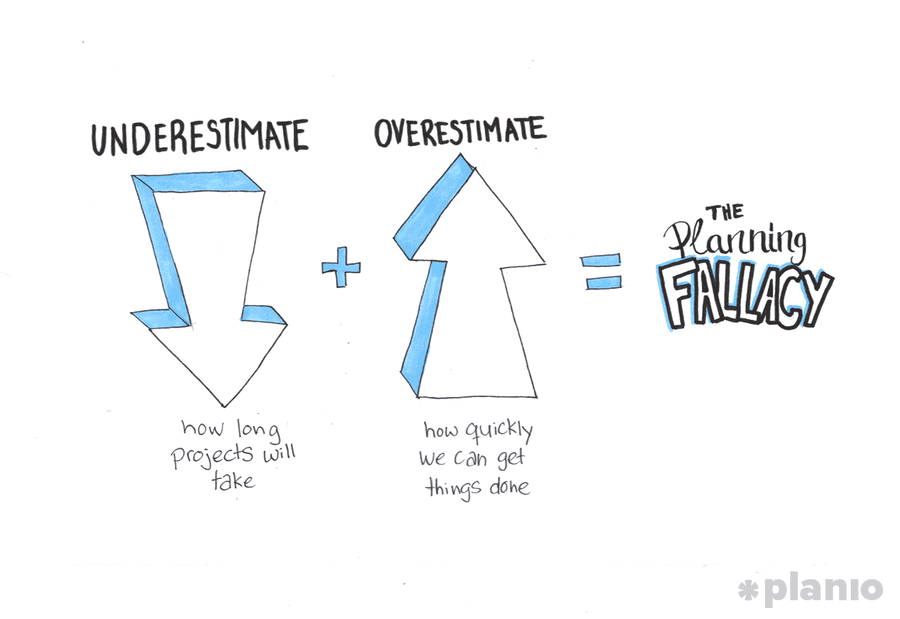Counteract the Planning Fallacy
When you start to schedule your tasks, you may be too optimistic about how much you can get done. You may take on too much work or get stressed when tasks take longer than you expected.
To counteract the Planning Fallacy:
- Work in a buffer into your schedule.
- If the task is familiar, give yourself 1 - 1.5 times you think it will take.
- If it is new, give yourself double the time you think it will take.
1.02K
3.02K reads
The idea is part of this collection:
Learn more about timemanagement with this collection
How to build trust and respect with team members
How to communicate effectively
How to motivate and inspire others
Related collections
Similar ideas to Counteract the Planning Fallacy
The planning fallacy
The term 'planning fallacy' was coined in 1977 and deals with how most of us are terrible at estimating how long a project will take. We are overly optimistic but terrible at predicting the future. If the project has a budget, we may underestimate that expense to...
Human Behaviour: The Planning Fallacy
We are bad at estimating the time it will take to accomplish a task, as we don’t take into account our distractions, procrastination, emergencies or delays.
To counter the planning fallacy, we need to assign blocks of time which are called ‘slacks’ by behavioural scientis...
Overcome the Planning Fallacy
- The next time you find yourself struggling to estimate, ask: How much time and effort have similar tasks required in the past?
- Schedule buffer time: Keep in mind that there will always be factors outside of your control, and moreover, you may very...
Read & Learn
20x Faster
without
deepstash
with
deepstash
with
deepstash
Personalized microlearning
—
100+ Learning Journeys
—
Access to 200,000+ ideas
—
Access to the mobile app
—
Unlimited idea saving
—
—
Unlimited history
—
—
Unlimited listening to ideas
—
—
Downloading & offline access
—
—
Supercharge your mind with one idea per day
Enter your email and spend 1 minute every day to learn something new.
I agree to receive email updates
